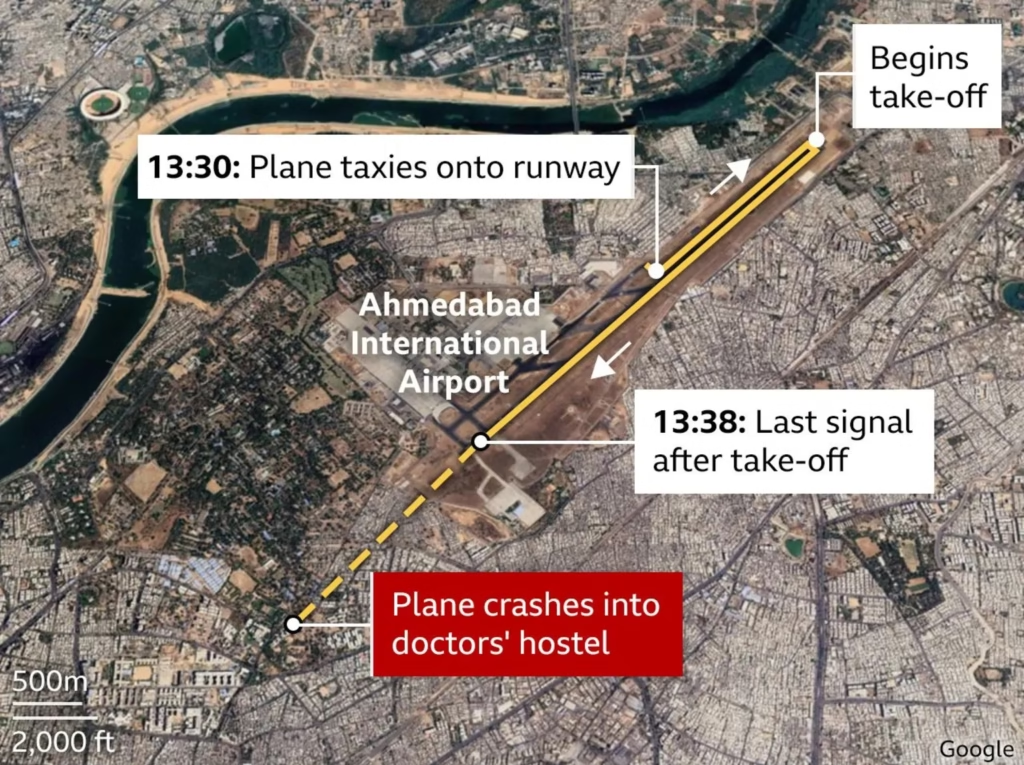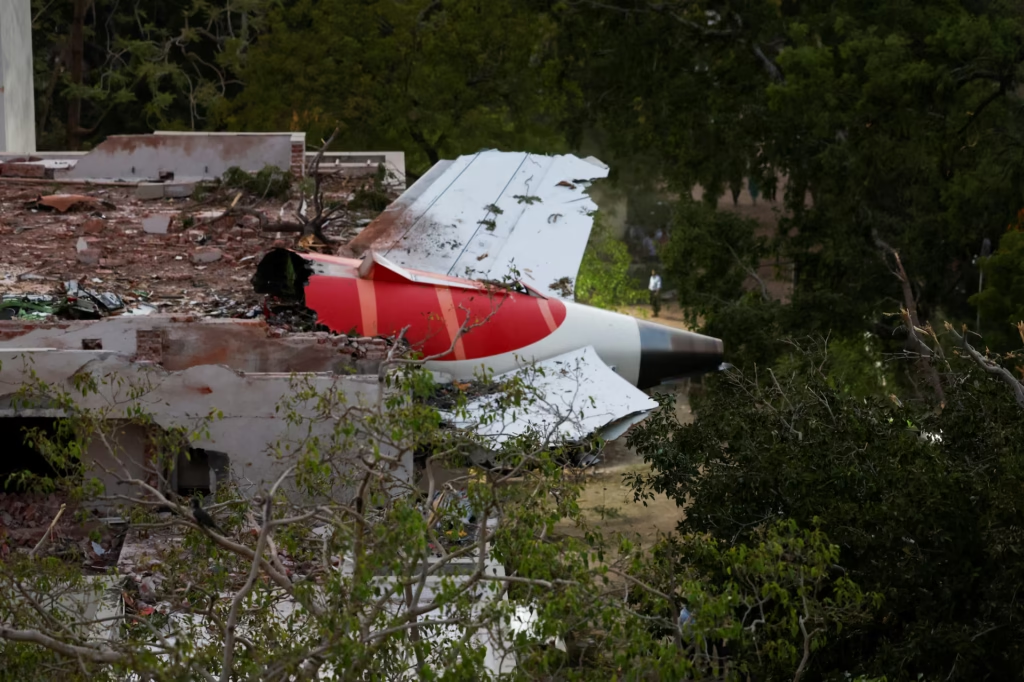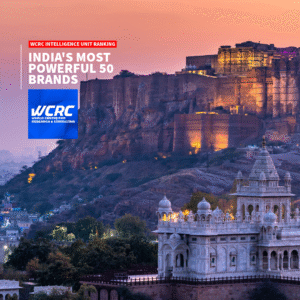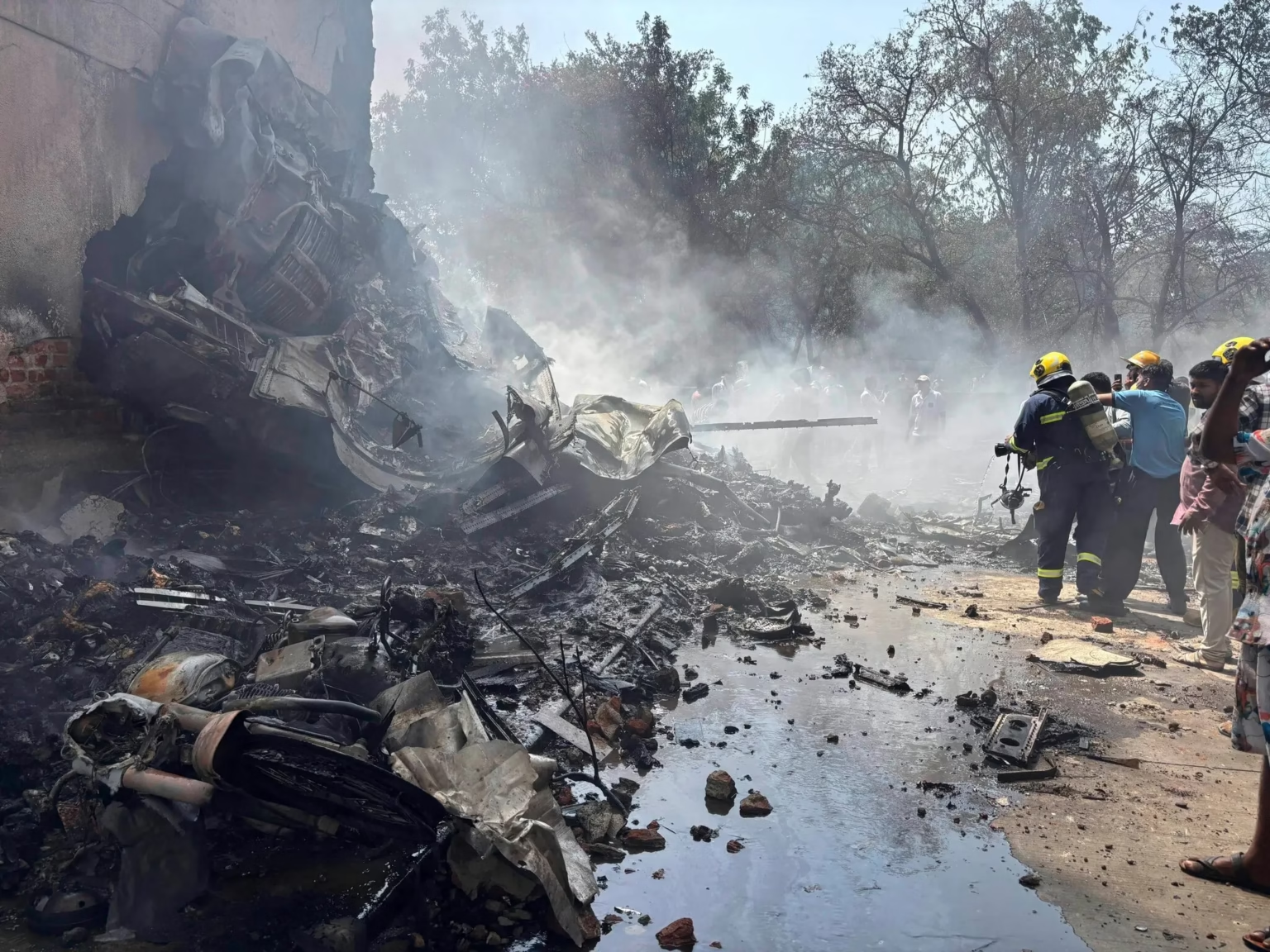Is Air India a blemish on the Tata legacy or a work in progress? Explore the challenges, expectations, and future of India’s national airline under Tata.
Authored by Abhimanyu Ghosh, CEO, WCRC

Flying Below the Legacy: My Air India Reality Check
In February of 2025 my last memory and experience with the Air India, en route to London for WCRC’s Annual Global Business Conclave, I boarded Air India with optimism. After all, this was now part of the revered Tata empire — a name we at WCRC have worked with, admired, and trusted for years. But the flight experience betrayed that legacy. Despite visible modernization efforts, Air India felt painfully unmanaged. At both Delhi and London Heathrow, the check-in process was clumsy and chaotic. The in-flight crew, though courteous, came across as inexperienced and undertrained — a far cry from the polished service one associates with the Tata ethos. Worst of all, my return flight — originally scheduled for 8:30 a.m. — was suddenly rescheduled to 9:30 p.m. the night before, with minimal explanation and zero empathy. It was a disruption that felt avoidable, unprofessional, and frankly, shoddy. For a group synonymous with operational excellence, ethical leadership, and corporate governance, Air India still seems to be flying far below the altitude of the Tata standard. It is not just a misstep — it’s a blemish on a near-impeccable legacy.
The Fall of a Titan’s Dream: Air India’s Failures Risk Tainting the Tata Legacy
In nearly every WCRC ranking, whether centered on India or broader Asia and the World, the Tata Group has consistently emerged at the top—unshakable in its excellence, integrity, and long-term vision. Across sectors, from steel to software, hospitality to automobiles, Tata brands have not just led—they have defined the benchmark for corporate performance and trustworthiness in the region. TCS Ranks No1. in India’s 50 Most Loved Workplaces Ranking and No2. in India’s Most Powerful 50 Brands ranking by WCRC. Titan, Taj Hotels, Tata Steel, Tata Motors are all a part of ur top 50 rankings in both Brands and Workplace Research and Rankings by WCRC Intelligence Unit.
At WCRC, we have long believed—and publicly stated—that if any Indian conglomerate was destined to become a true global hurricane, capable of challenging and eclipsing legacy multinationals, it would be Tata. Its DNA of humility, governance, and innovation made it a natural champion of India’s global business ambitions.
And then came Air India—once a crown jewel of Indian aviation under J.R.D. Tata, now a fragile relic struggling under the weight of its past.
When the Tata Group reacquired Air India from the Indian government in 2022, the world watched with hope. This was, after all, not just a business deal; it was a reclamation of legacy. Yet, despite enormous capital infusion, global-scale aircraft orders, and cosmetic branding efforts, Air India continues to fall short of basic consumer expectations. Delays, mismanagement, and poor in-flight experiences are still the norm. The brand has remained erratic, chaotic, and tragically stuck in a bygone era.

But the most damning blow to the Tata legacy came on the tragic morning of June 12, 2025—a day that will forever be etched in the annals of aviation history and corporate crisis. Just minutes after takeoff from Ahmedabad, en route to London Gatwick, an Air India flight plunged into catastrophe, crashing with devastating consequences. The flight, operated under the Tata-owned Air India banner, carried not only passengers and crew but also the burden of a nation’s trust and the weight of a legendary corporate name.
On the afternoon of June 12, 2025, what was expected to be a routine international flight from Ahmedabad to London Gatwick turned into one of the most devastating events in modern aviation history. Air India Flight AI171, a Boeing 787-8 Dreamliner, crashed within minutes of takeoff, bursting into flames and crashing into a residential structure of the B.J. Medical College campus. The crash killed 241 passengers and crew, along with at least 28 civilians on the ground. One lone survivor emerged from the wreckage—a near-miraculous exception to an otherwise total loss of life.

Yet the physical destruction tells only part of the story. The symbolic impact of this crash is seismic—hitting not only India’s aviation industry but striking at the heart of the Tata Group’s carefully built reputation for safety, ethics, and operational excellence. This was not just a plane crash. It was a catastrophic failure of brand confidence, trust, and possibly systems oversight, now entangled with a name long synonymous with corporate integrity. As images of the Dreamliner’s mangled frame circulated globally, so did an unspoken truth: Air India, even under Tata’s stewardship, may still be too broken to fix.
This incident—occurring at a moment when Tata was positioning Air India for a global relaunch—now threatens to unravel years of strategic planning. It casts a long shadow over the group’s ambitious vision of reclaiming international prestige in aviation, and may prove to be the single most damaging crisis to confront the Tata Group in its modern history.
The full facts remain elusive. Investigations are ongoing. But early reports suggest a mystifying and deeply unsettling series of technical failures that defy easy explanation. No official cause has been confirmed, yet the scale and suddenness of the disaster have made it one of the most shocking and confounding tragedies in global aviation history. Survivors are few, answers are fewer—and the emotional toll is immeasurable.
What makes this catastrophe even more harrowing is that it happened under the stewardship of the Tata Group—India’s most respected and trusted corporate institution. For over a century, Tata has stood as a symbol of ethical capitalism, of Indian excellence with global sensibility. That such a bloody and horrifying chapter now bears the Tata name is not just a public relations nightmare—it is a moral scar that may haunt the group’s legacy for years, if not decades.
Despite swift action—including a ₹1 crore compensation announced for the bereaved families—the scale of public sentiment cannot be soothed by financial reparations alone. This is not just about lives lost. It is about a nation’s pride betrayed, a brand trust eroded, and the myth of Tata’s invincibility suddenly shattered.
Public sentiment is soaring with anger and disillusionment, and for the first time in decades, the Tata name finds itself at the center of mistrust.
This isn’t just a branding challenge. This is a legacy crisis. For a group that built the Taj Hotels as a symbol of Indian luxury, TCS as a global technology powerhouse, and Jaguar Land Rover into a revived global player, the failure to uplift Air India feels jarringly out of place. It suggests that even the might and method of Tata may not be enough to undo years of systemic rot in a government-battered airline.
The decision to merge Vistara, an airline that epitomized premium Indian aviation, into this flawed system now feels even more questionable. Instead of preserving a rising star, Tata may have fed it into a sinking ship—hoping to modernize from within but failing to recognize the brand damage that Air India could inflict outward.
As the dust settles over the Ahmedabad tragedy, the Tata Group faces perhaps its greatest corporate challenge yet—not just turning around a broken airline, but restoring public trust in the very idea that Tata can never fail.
Legacy, Luxury, and a Strategic Misstep: Why Vistara’s Merger into Air India Could Haunt the Tata Group
Few corporate names in India—and indeed the world—command the trust, admiration, and prestige of the Tata Group. For generations, Tata has built not just companies, but institutions. From the engineering brilliance of Tata Steel to the tech dominance of Tata Consultancy Services (TCS) and the timeless elegance of Taj Hotels, Tata is more than a conglomerate—it is the moral compass of Indian business.
One of its most elegant ventures in recent years was Vistara Airlines, a joint venture with Singapore Airlines. In under a decade, Vistara managed to carve a niche in India’s competitive aviation market with its promise of quiet luxury, seamless operations, and service excellence. It was the future of Indian aviation—premium, predictable, and polished.
Then came a baffling decision: the merger of Vistara into Air India.
For the Tata Group, acquiring Air India from the Indian government in 2022 was steeped in emotional symbolism. Founded by J.R.D. Tata in 1932, Air India was the jewel in India’s aviation crown—before being nationalized and left to languish under bureaucratic neglect for decades. By the time the Tatas took over, Air India had become a case study in systemic failure: late flights, mismanaged crews, poor customer service, and a global brand reputation in free fall.
Turning it around was never going to be just a business challenge—it was a battle against history.
Yet, rather than protect Vistara as a separate, premium offering that could lead the Tata aviation dream into the future, the group folded it into Air India. The result is a merger that feels more like a brand sacrifice than a strategic synergy.
Even as Air India’s rebranding is underway—with shiny new aircraft, cabin redesigns, and ad campaigns—the customer experience remains patchy, the systems outdated, and the service inconsistent. More worryingly, the trust deficit runs deep.
And now, the recent Ahmedabad runway crash involving an Air India Express flight has reignited every dormant fear passengers hold about the brand. While no lives were lost, the very nature of the incident—where a plane overshot the runway in adverse weather—has shattered what little confidence was being rebuilt. The timing couldn’t be worse. For a brand already struggling to redefine itself under Tata stewardship, such an incident is not just a technical failure—it is a public relations catastrophe.
For Tata, a group synonymous with excellence and accountability, this is dangerous territory. The Ahmedabad incident will be remembered not just as an operational lapse, but as a symbolic dent in the company’s otherwise immaculate legacy. It will raise questions not only about Air India’s safety culture but about whether even the Tata Group—India’s most trusted corporate family—can restore faith in a brand this broken.
To rebuild Air India into a global powerhouse, on par with the Taj, TCS, or Jaguar Land Rover, was always the most ambitious brand resurrection in modern corporate history. Now, with each mishap, that vision looks increasingly like a high-risk gamble with Tata’s hard-earned legacy on the line.
As the skies darken over Indian aviation’s grandest comeback story, one must ask: Was merging Vistara—India’s finest airline—into this troubled narrative a historic miscalculation?
Air India’s Defining Crisis: What the Crash of Flight AI171 Reveals—and What Must Come Next
The crash of Air India Flight AI171 on June 12, 2025, is not just an aviation disaster. It is a watershed moment for Indian aviation and the Tata Group’s global aspirations. The Dreamliner crash—killing 241 passengers and crew, and at least 28 civilians on the ground—came during a critical phase in Air India’s transformation. For Tata, it was supposed to be the takeoff point of a new aviation narrative. Instead, it has become an unfolding corporate and human tragedy with far-reaching consequences.
A Crisis of Trust, Not Just Technology
Though the cause is still under investigation, several plausible scenarios have emerged: possible misconfiguration of flaps and landing gear, engine thrust failure, or a critical systems error. Some aviation experts have even pointed to an industry-wide decline in flight crew readiness post-COVID, where long periods of grounding have blunted sharp flying skills, especially among junior pilots. If any of these factors are confirmed, they would point to failures far beyond the cockpit—failures in training, maintenance protocols, and operational governance.
But more than mechanical, this tragedy is psychological and reputational. For decades, Air India has suffered from chronic underperformance, bureaucracy, and poor service culture. When Tata took over, it wasn’t just a business acquisition—it was a restoration of national pride. The airline had to be not only fixed but reborn. That symbolic rebirth now lies in ruins.
The Cost of Misaligned Integration: The Vistara Gamble
WCRC had already questioned the strategic logic behind merging Vistara—a premium, well-performing airline—into Air India, a brand haunted by years of decay. Vistara had built its own identity: refined, reliable, customer-first. Air India, despite a new livery and marketing revamp, has failed to internalize those values. This crash underscores the cost of forced brand convergence without operational transformation. It wasn’t Vistara that needed Air India; it was the other way around. And now, Vistara’s distinctiveness is at risk of being buried in the wreckage—figuratively and perhaps literally.
A Legacy at a Crossroads
The crash of AI171 has the potential to reshape the future of Indian aviation and redefine public sentiment toward the Tata Group. It may be the single greatest test of the Tata legacy in a century. The question is no longer about reviving Air India—it is about deciding whether the brand as we know it is even worth saving.
WCRC has always celebrated the Tata Group for its values, innovation, and consistency. Now, more than ever, we hope Tata will choose courage over caution, truth over optics, and long-term legacy over short-term recovery. Because from this point forward, the skies won’t forget—and neither will the people.










